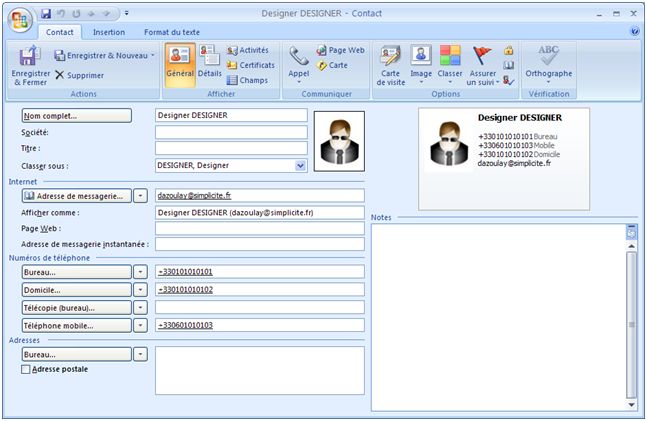Templates
Here are two examples using substitutions in a text template
vCard publication
If a business objects includes identity data it may be published as a vCard to be imported on contact management systems, e-mail clients, mobile devices, ...
An example of vCard publication (using a dedicated publication template) is provided on the standard User object:
[BEGIN]
BEGIN:VCARD
VERSION:2.1
N:[VALUE:usr_last_name];[VALUE:usr_first_name]
TEL;CELL:[VALUE:usr_cell_num]
TEL;WORK;VOICE:[VALUE:usr_work_num]
TEL;HOME;VOICE:[VALUE:usr_home_num]
EMAIL;PREF;INTERNET:[VALUE:usr_email]
UID:[VALUE:usr_login]
ADR;WORK:;[VALUE:usr_address2];[VALUE:usr_address1];[VALUE:usr_city];[VALUE:usr_state];[VALUE:usr_zipcode];[VALUE:usr_country]
PHOTO;ENCODING=BASE64:[EXPR:res = DocumentDB.toBase64(obj.getField("usr_image_id").getValue(), obj.getGrant());]
END:VCARD
[END]
Note the usage of a DocumentDB API for inlining the user picture as a base 64 encoded string,
the global [BEGIN] / [END] publication template statements allows to export multiple vCards
at the same time (beware that this bulk import is not possible with every e-mail clients).
For instance the import of published data renders as follows in Microsoft Outlook®:

RSS publication
The simplest approach for publishing business object data as a RSS feed
is to configure a publication template such as the one used by default for
the WebNewsobject (publication template name is WebNewsAsRSS):
<?xml version="1.0" encoding="UTF-8"?>
<rss version="2.0">
<channel>
<title>[LABEL:WebNews]</title>
<description>[LABEL:WebNews]</description>
<generator>Simplicite</generator>
<ttl>15</ttl>
[BEGIN]
<item>
<title><![CDATA[[VALUE:nws_title]]]></title>
<description><![CDATA[[VALUE:nws_description]]]></description>
<pubDate>[VALUE:nws_date]</pubDate>
</item>
[END]
</channel>
</rss>
If the RSS is to be public the object must be granted in read mode
to the PUBLIC group, so as the publication template.